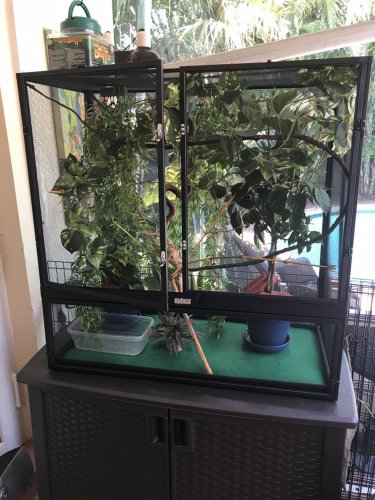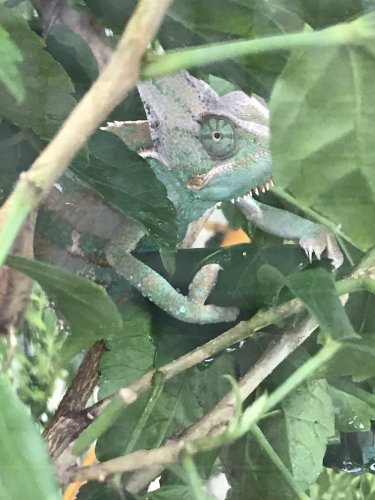Totaylor
New Member
New to Chams. Just bought a 6 - 8 month old male veiled chameleon several days ago from a local reptile shop. Took him to an exotic pets vet. She thought he was dehydrated because his head “cone” was concave and not puffy. Never read anything about that anywhere.
She recommended soaking him for an hour - didn’t say how often.
He seems to be eating all his live crickets and having daily formed tic-tac like black droppings and a few daily white unrates the size of a dime.
Thoughts?
I have a cage mister going every hour for 60 seconds during the day and a dripper that goes constantly for a few hours every morning.
She recommended soaking him for an hour - didn’t say how often.
He seems to be eating all his live crickets and having daily formed tic-tac like black droppings and a few daily white unrates the size of a dime.
Thoughts?
I have a cage mister going every hour for 60 seconds during the day and a dripper that goes constantly for a few hours every morning.






